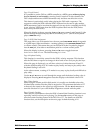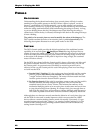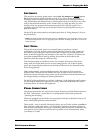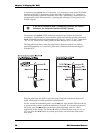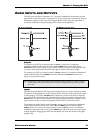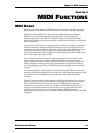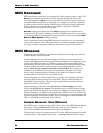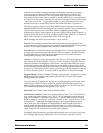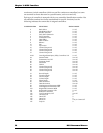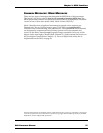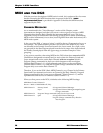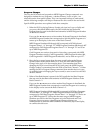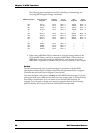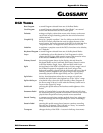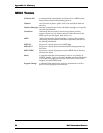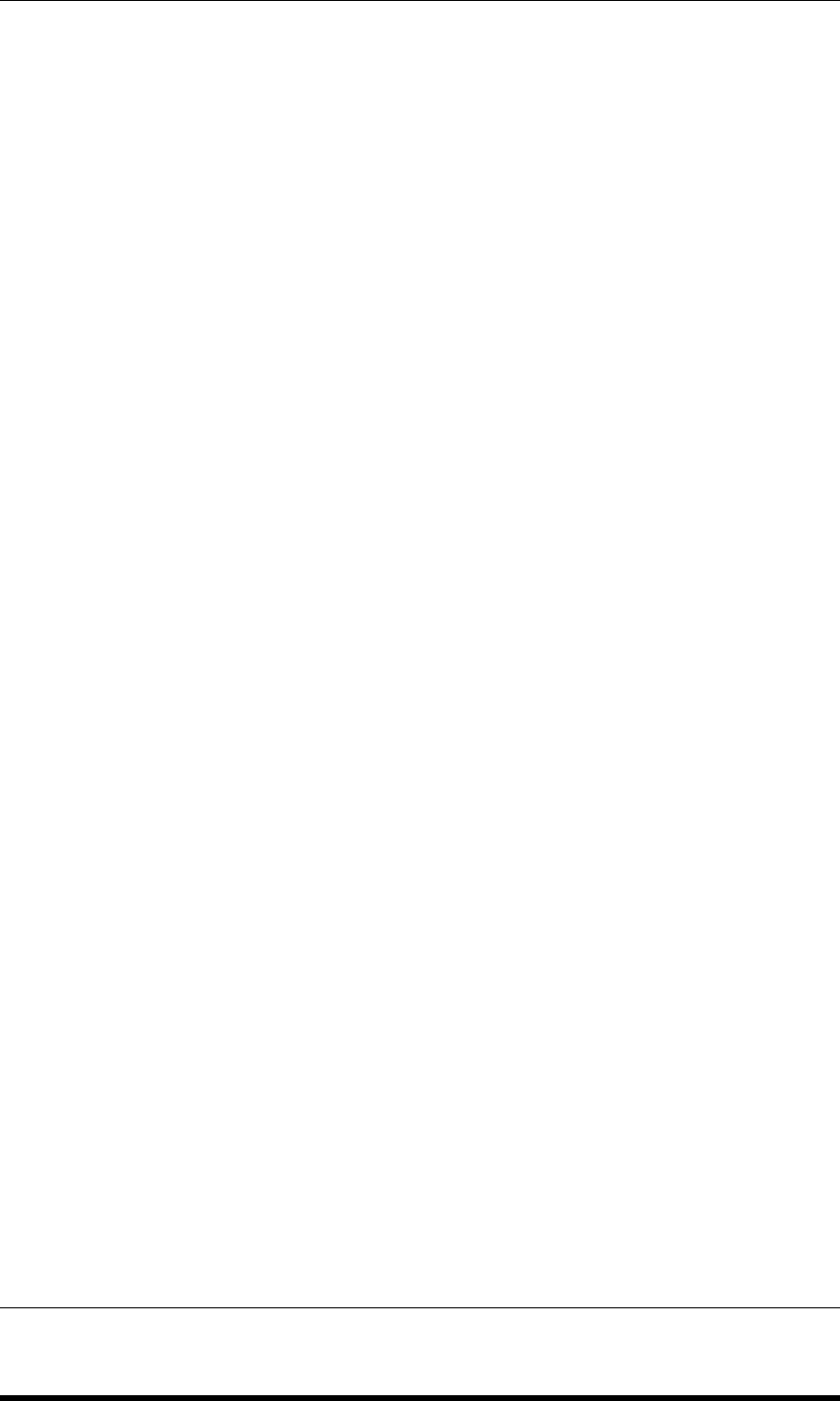
Chapter 3: MIDI Functions
DG8 REFERENCE MANUAL 55
common. For example, certain instruments are designed such that you can set a
Voice or group of voices to MIDI Channels other than the Basic Channel. This
provides enormous flexibility in the way that the instrument can control other
instruments in the system, or be controlled by another MIDI device. You might want
to think of a device’s Basic Channel as the one on which other Channels can be based
– hence the word “basic”. A good place to start is a setup that instructs the unit to
transmit and receive on the Basic Channel, then build from there if you need to.
The DG8 is a prime example of a multiple MIDI Channel instrument in that three
successive MIDI Channels are designated to communicate data: Primary Sounds and
Layers transmit and receive on the Basic Channel except Program Change
commands for Layers, which happen on the next higher Channel (Basic Channel +1);
Splits transmit and receive on the next higher Channel (Basic Channel + 2). For an in-
depth look at how this is implemented on the DG8, see page 58.
MIDI messages that affect your instrument’s voices include:
Note On. This message communicates that a particular note is being played and
corresponds to a key being pressed down; values range from 000 (the lowest possible
note) to 127 (the highest possible note). Middle C is MIDI Note #60.
Note Off. Where a Note On message communicates when a note is to be played, this
message tells when the key has been released. This may appear a little like overkill,
but remember that we’re dealing with computers here: every action requires a
corresponding message to be communicated.
Velocity. A Velocity message corresponds to the dynamics of your playing by telling
the receiving device how quickly (or slowly) a note was played. Typically, Velocity
affects the loudness and brightness of the sound – playing harder makes the sound
louder and brighter; playing softly makes the sound quieter and less bright. In the
more elaborate products, this data can be routed to other aspects of the sound as well
for some very interesting results. Velocity values range from 001 (minimum velocity)
to 127 (maximum velocity). A velocity of 000 is equivalent to a Note Off message.
Program Change. Sending a Program Change command from a sequencer or another
MIDI keyboard can change synth patches automatically. There are 128 Program
Change command numbers.
Also note that not all instruments and devices number programs consistently. Some
number them as 000-127, others as 001-128, and still others arrange programs in
banks of eight programs (such as A1-A8, B1-B8, C1-C8, etc.) or, as in the case of the
DG8, Banks of four programs designated A, B, C and D.
Pitch Bend. This “bends” a note from its standard pitch.
Continuous Controllers. This term is sometimes abbreviated “CC” and is followed
by a number sign and a number, as in “CC #7”. If you look at the chart on the next
page, you’ll see that “Continuous Controller # 7” controls MIDI (or Main) Volume.
What we mean by “continuous” is that the controller is able “to go from 0 to 127 in
increments of 1”. Although this might first appear as a rough stepping from one
value to the next, the resolution of 128 increments is small enough to provide a
smooth transition through this range. If this resolution is not fine enough, the
manufacturer can opt to add more resolution by using a second byte to define the
range. Controller #’s 32 through 63 are used for this purpose.
Footpedals, breath controllers, and modulation wheels can vary sounds as you play,
thus adding expressiveness. MIDI allows for 32 continuous controllers and 58



